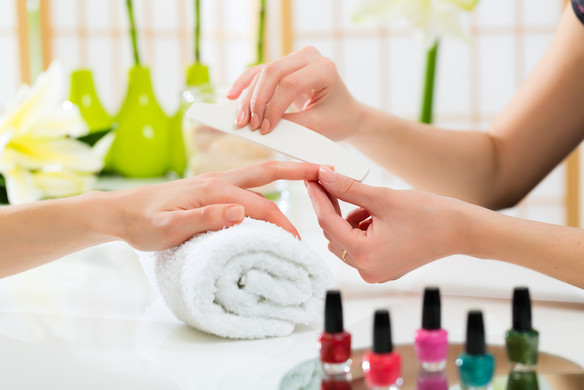Table of contents
With the rise of going green and getting clean, many consumers are reassessing what goes on (and in) their bodies. And one industry that’s notorious for a lack of natural alternatives? Beauty — specifically, nail salons.
A 2015 New York Times feature largely exposed the nail industry’s health and labor hazards, including many ingredients found in nail products that have been tied to cancer, miscarriages, lung disease, and other ailments.
While subsequent studies have confirmed the risks involved, the FDA has not banned the chemicals in question (many of which have already been banned in Canada and the European Union). In response, a number of salon professionals and other advocates have been vocal about improving the industry. And many nail salon owners have turned to self-regulation.
If you own a nail salon, or a salon that works with nail products, you may be exposing yourself, your employees, and your customers to health risks. You can clean up your act by going green — removing potentially harmful chemicals and implementing more environmentally-friendly practices.
Besides reducing the health risks, going green is also a great move for your business. A recent study found that natural skin-care products are again the all-natural products most in demand, and more than a third of women (35 percent) will spend more money on green beauty products over the next two years.
You’ll save money with more efficient energy consumption, create a positive, safe workplace, and have a stable, loyal customer base that values your efforts.
Read on for steps you can take if you’re ready to go green at your nail salon.
Eliminate chemicals.
Celebrity green manicurist Jenna Hipp created The Hipp List to specify which nail-product ingredients you should steer clear of. According to Jenna, you should stock nail polishes, lacquers, polish removers, glues, lotions, creams, and artificial nails that don’t contain the following potentially harmful chemicals:
- Polishes and lacquers with toluene, dibutyl phthalate, or formaldehyde
- Nail polish thinners with toluene or methyl ethyl ketone (MEK)
- Nail polish removers with ethyl or butyl acetate
- Artificial nails with methyl methacrylate
- Lotions and creams with synthetic fragrance (which is often linked to hormone disruption and allergens linked to skin problems), parabens, sulfates (or SLES), and nitrosamines (a known carcinogen frequently found in moisturizers and associated with endocrine disruption). Related chemicals are diethanolamine (DEA) and triethanolamine (TEA).
Integrate clean products.
After you recycle toxic products, replace them with clean ones. The EWG’s Skin Deep Cosmetics database is a great place to start looking for clean products as well as regularly check for ones you might be curious about. (You won’t be the only one — a study about green beauty determined that 55 percent of women read up on what ingredients are in a beauty product prior to purchase, to avoid certain ingredients like chemicals.
Keep the air clean.
Ensure your space, and each individual station, is properly ventilated to reduce chemical fumes from being trapped indoors. Invest in an air purifier and make sure your HVAC system is running throughout the day.
Be environmentally friendly.
Encourage your employees to compost and recycle corresponding materials, and offer paperless receipts and feedback forms for customers. Bonus points for setting up shop in a building that is LEED certified, or powered by alternative energy.
Give back.
Consider donating to environmentally-friendly organizations or purchasing carbon offsets for your business. You could also volunteer your time (and your team’s) at a similar organization. And don’t forget to participate in Earth Day — a fun opportunity to engage with your community and share your environmental efforts.
You can learn more with a highly comprehensive list by the EPA, and find additional guidance here.
![]()












